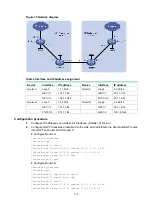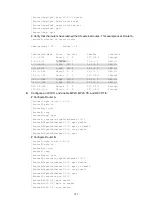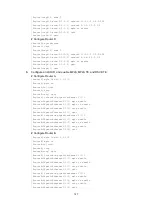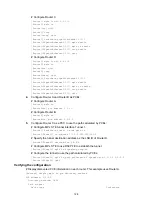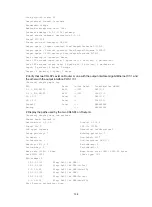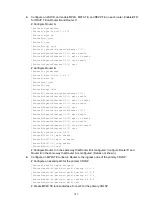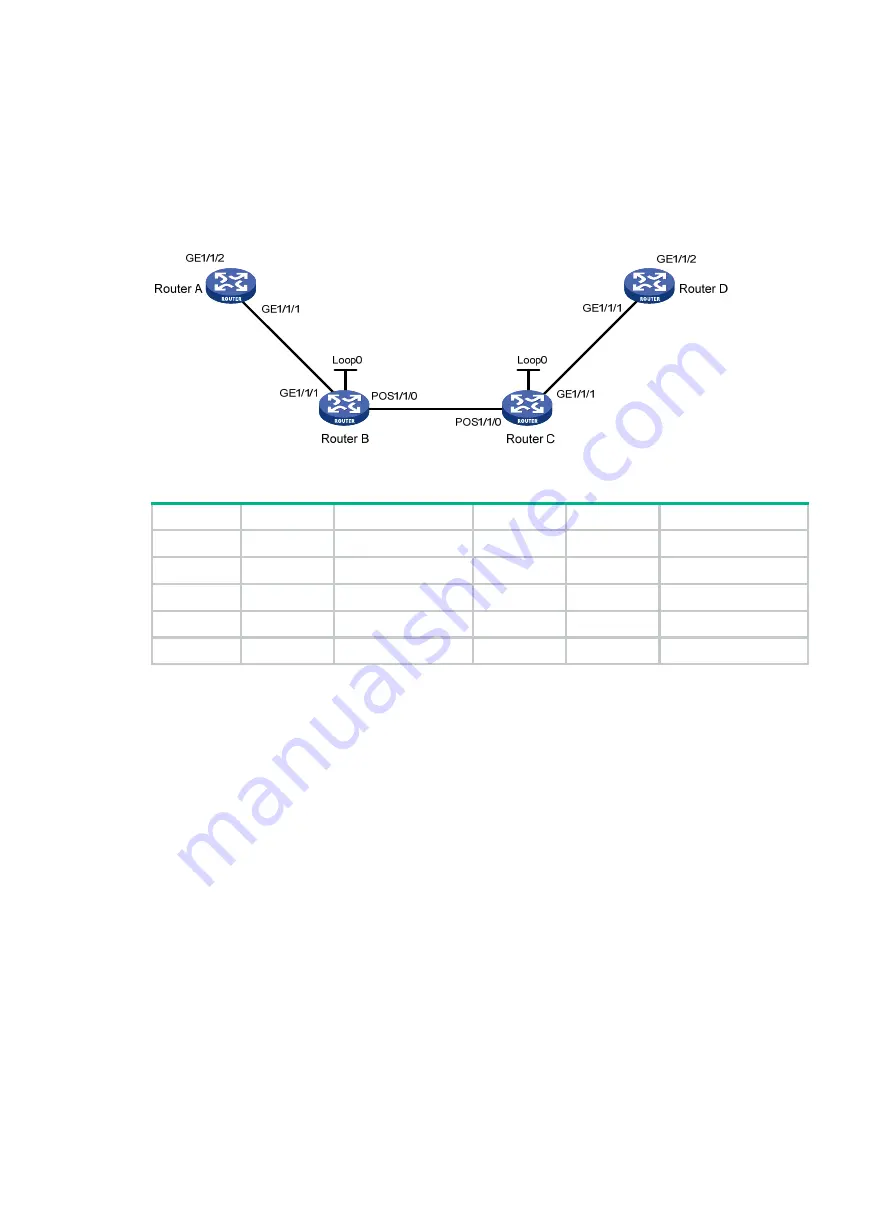
130
Bidirectional MPLS TE tunnel configuration example
Network requirements
Router A, Router B, Router C, and Router D all run IS-IS and they are all level-2 routers.
Use RSVP-TE to establish a bidirectional MPLS TE tunnel between Router A and Router D.
Figure 37 Network diagram
Table 5 Interface and IP address assignment
Device
Interface
IP address
Device
Interface
IP address
Router A
Loop0
1.1.1.9/32
Router C
Loop0
3.3.3.9/32
GE1/1/1
10.1.1.1/24
GE1/1/1
30.1.1.1/24
Router B
Loop0
2.2.2.9/32
POS1/1/0
20.1.1.2/24
GE1/1/1
10.1.1.2/24
Router D
Loop0
4.4.4.9/32
POS1/1/0
20.1.1.1/24
GE1/1/1
30.1.1.2/24
Configuration procedure
1.
Configure IP addresses and masks for interfaces. (Details not shown.)
2.
Configure IS-IS to advertise interface addresses, including the loopback interface address:
For more information, see "
Establishing an MPLS TE tunnel with RSVP-TE
3.
Configure an LSR ID, and enable MPLS, MPLS TE, and RSVP-TE on each router. Configure
Router A and Router D to assign a non-null label to the penultimate hop:
# Configure Router A.
<RouterA> system-view
[RouterA] mpls lsr-id 1.1.1.9
[RouterA] mpls label advertise non-null
[RouterA] mpls te
[RouterA-te] quit
[RouterA] rsvp
[RouterA-rsvp] quit
[RouterA] interface gigabitethernet 1/1/1
[RouterA-GigabitEthernet1/1/1] mpls enable
[RouterA-GigabitEthernet1/1/1] mpls te enable
[RouterA-GigabitEthernet1/1/1] rsvp enable
[RouterA-GigabitEthernet1/1/1] quit
# Configure Router B.




